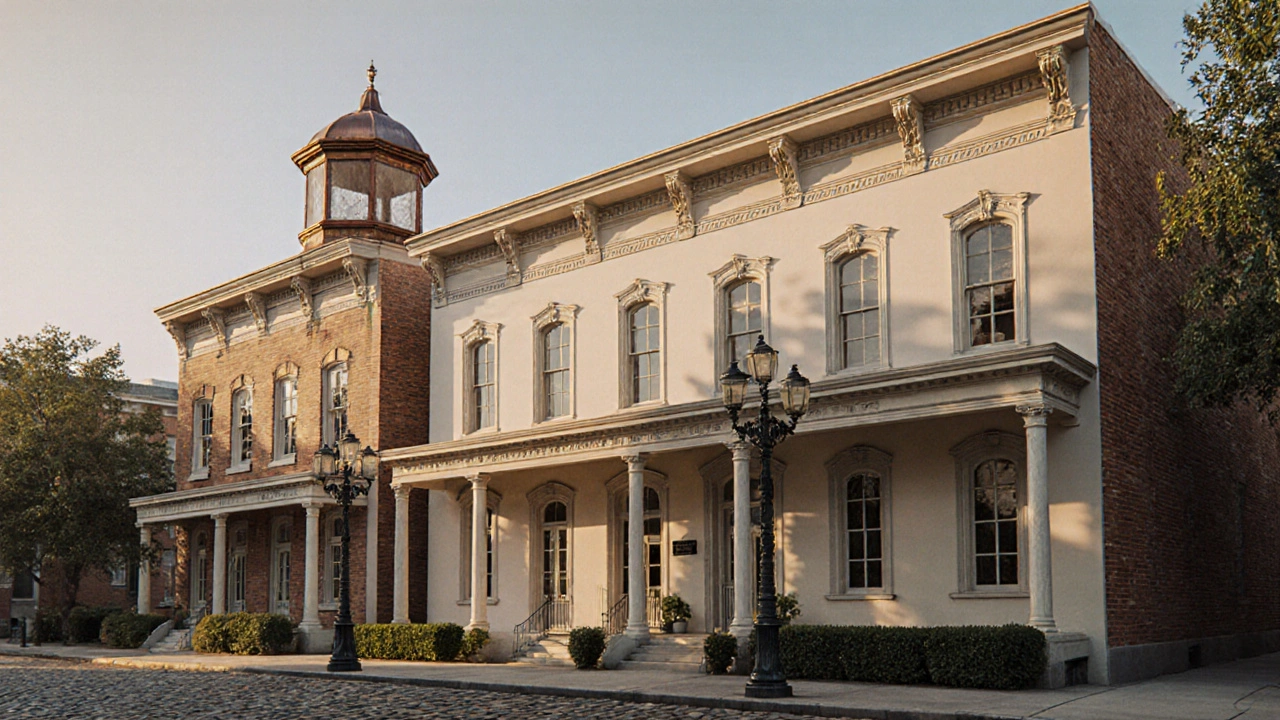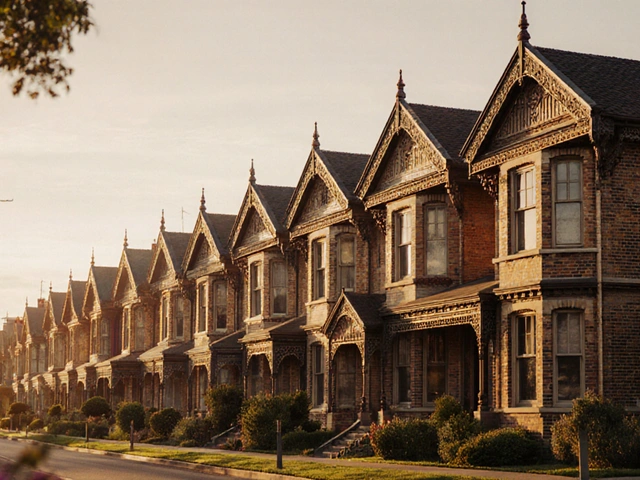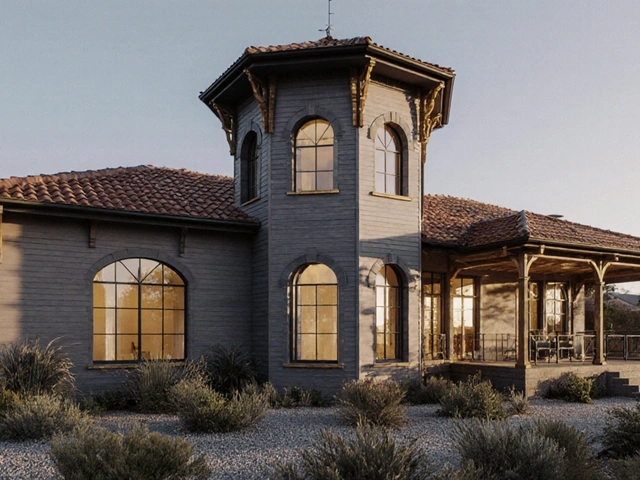Italianate Window Proportion Calculator
Window Proportion Calculator
Calculate the ideal height-to-width ratio for authentic Italianate windows (typically 2:1). Input your window width to find the recommended height.
According to the article, Italianate windows typically follow a 2:1 height-to-width ratio. This calculation helps you maintain authentic proportions when designing or restoring.
Imagine strolling through a 19th‑century streetscape, the roofs dotted with cupolas, windows tall and narrow, and eaves braced by heavy brackets. That vivid scene is the hallmark of Italianate architecture, a style that married European romance with American practicality. If you’re curious why this look still feels fresh in today’s homes, keep reading. We’ll explore its roots, key features, famous practitioners, how it stacks up against sibling Victorian styles, and practical ways to weave its charm into modern projects.
Historical Roots of the Italianate Style
Italianate architecture is a 19th‑century movement that draws inspiration from the informal farmhouses and urban palazzos of Italy’s countryside. Emerging in England during the early 1800s, the style was championed by architects such as John Nash and quickly crossed the Atlantic. In the United States, the Victorian era (1837‑1901) provided fertile ground for the Italianate’s growth, aligning with the nation’s appetite for ornate yet adaptable designs.
Pattern books by Andrew Jackson Downing and Alexander Jackson Davis spread the look to suburban developers. Downing’s 1842 guide, *The Architecture of Country Houses*, featured Italianate villas as the ideal blend of rural charm and urbane sophistication, cementing the style’s popularity among the growing middle class.
Key Architectural Elements
Four visual cues instantly signal an Italianate building:
- Bracketed cornice: Wide eaves supported by oversized, scroll‑shaped brackets, often painted in contrasting colors.
- Tall, narrow windows: Usually rounded or segmental arches, sometimes crowned with decorative hoods.
- Cupola or belvedere: A small, often octagonal tower that adds vertical emphasis and ventilation.
- Low‑pitched or flat roof: Often hidden behind the pronounced cornice, creating a horizontal silhouette.
These elements aren’t merely decorative; they serve functional roles. Brackets protect walls from rain, tall windows improve interior lighting, and cupolas enhance airflow-a practical marriage of form and function.
Prominent Architects and Iconic Examples
Two architects shaped the American Italianate wave:
- Alexander Jackson Davis (1803‑1892): His designs for New York’s Vauxhall and the famed Longwood House in Natchez, Mississippi, showcase the style’s flexibility, from modest townhouses to grand plantation mansions.
- Andrew Jackson Downing (1815‑1852): Though primarily a landscape theorist, his published patterns made Italianate aesthetics accessible to builders across the Northeast.
Iconic structures you might recognize include:
- The Herman Melville House in New York City, a rowhouse with a pronounced cornice and arched windows.
- The Old Louisville Customs House, featuring a copper‑clad cupola and elaborate stone brackets.
- The Morse House in San Francisco, a preserved wood‑frame example with tall, hooded windows.
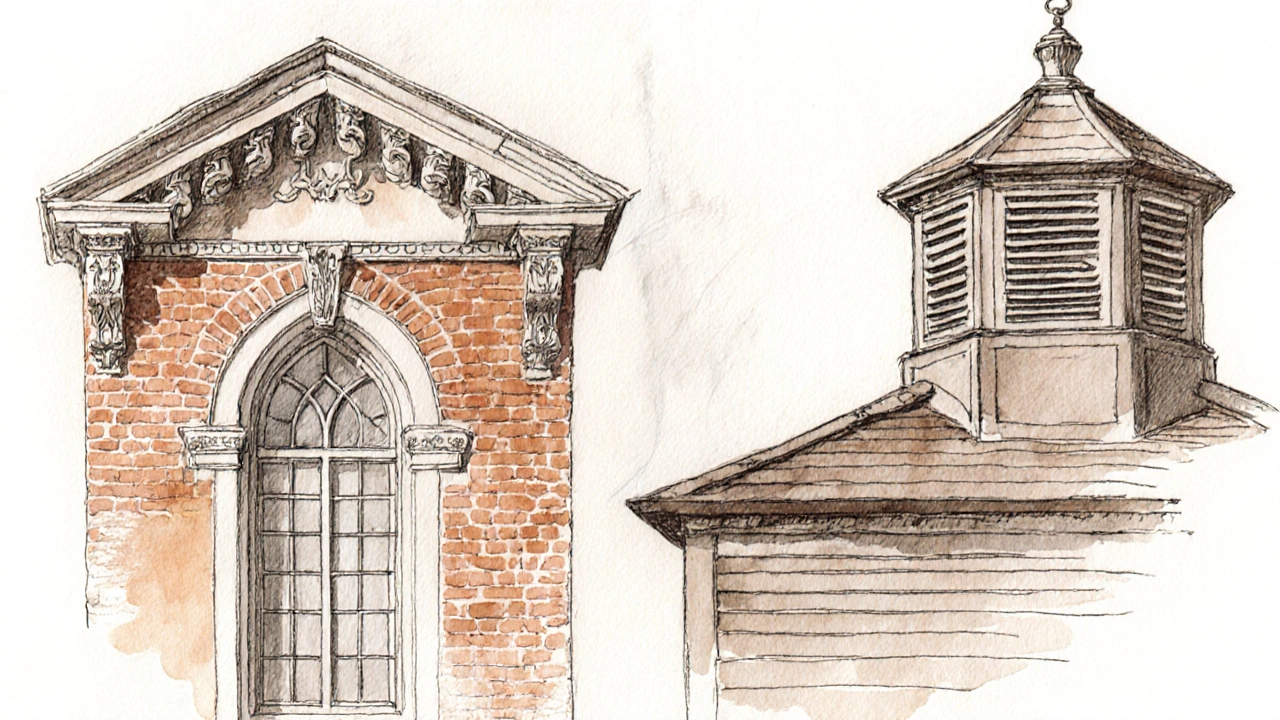
Italianate vs. Other Victorian Styles
| Feature | Italianate | Gothic Revival | Second Empire |
|---|---|---|---|
| Roof shape | Low‑pitched, often hidden | Steeply pitched, gabled | Mansard (dual slope) |
| Key ornamentation | Bracketed cornice, cupola | Pointed arches, tracery | Dormer windows, iron cresting |
| Window style | Tall, narrow, arched | Lancet, mullioned | Paired, often with decorative hoods |
| Typical materials | Brick or wood clapboard | Stone or brick | Stone, brick, or stucco |
| Geographic prevalence | Mid‑Atlantic, Midwest, West Coast | Northeast, New England | Urban centers, especially New York |
While all three styles share ornamental ambition, Italianate’s horizontal emphasis and Mediterranean roots give it a lighter, more relaxed feel compared to the vertical drama of Gothic Revival or the imposing mansard roofs of Second Empire.
Design Tips for Modern Applications
Bringing Italianate flair into a 21st‑century home doesn’t require a full‑scale replica. Here are actionable ideas:
- Use bracketed eaves on a new addition’s roofline-prefabricated wooden brackets are affordable and install in a weekend.
- Swap standard double‑hung windows for narrow, segment‑arched replacements. Modern vinyl or fiberglass options can mimic historic wood profiles while increasing energy efficiency.
- Incorporate a modest cupola on a garage or detached studio. Even a faux cupola made from reclaimed timber adds visual interest without structural complexity.
- Apply a muted, earth‑tone paint palette-terracotta, sage, and warm gray-to echo the style’s Italian countryside origins.
- Layer interior details: tall door frames, decorative crown moulding, and marble or cast‑iron fireplace mantels echo the exterior vocabulary inside.
Remember, balance is key. Too many brackets can look cartoonish; select one or two focal points and let the rest of the façade stay clean.
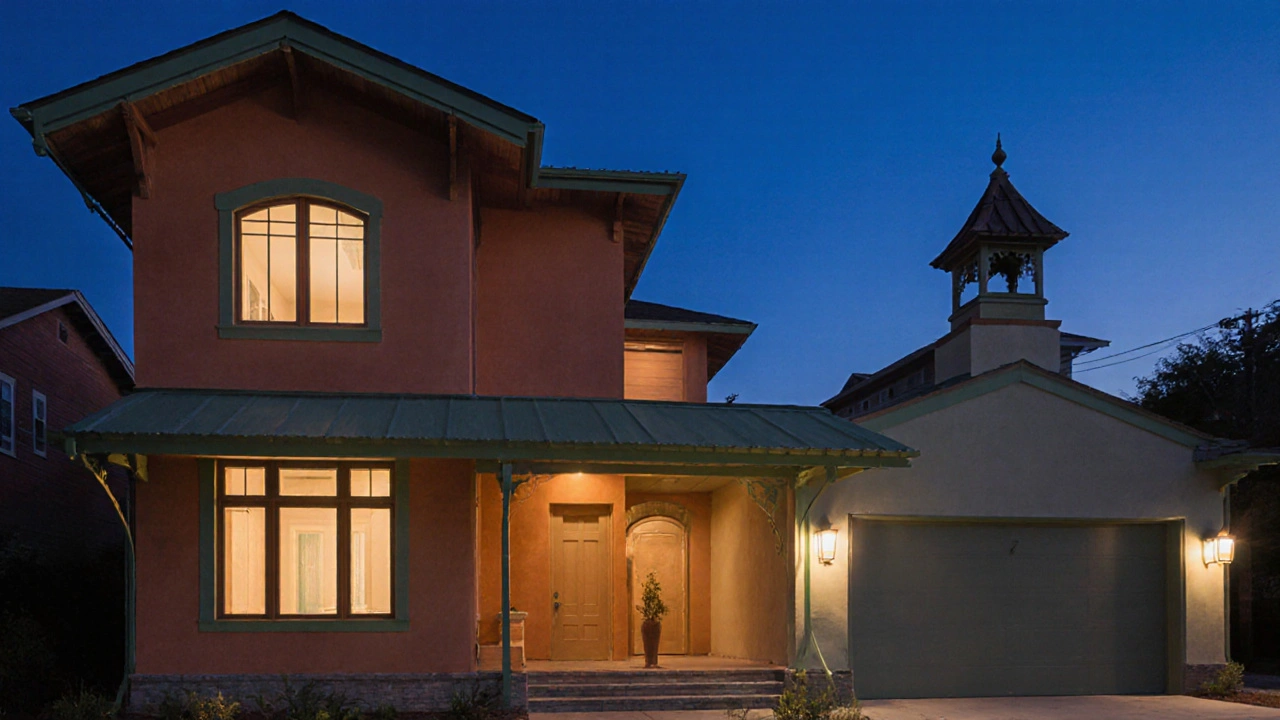
Preservation and Restoration Challenges
Many Italianate buildings now qualify for historic‑district status, which brings both benefits and responsibilities. Common issues include deteriorating wooden brackets, water‑logged cornice plaster, and outdated window glazing. When restoring:
- Conduct a detailed condition survey-note each bracket’s material, attachment method, and paint layers.
- Prioritize in‑situ repair over replacement. Skilled carpenters can consolidate cracked wood with epoxy‑infused fillers, preserving original fabric.
- Upgrade windows with interior storm panels rather than swapping them out, maintaining the original sightlines while improving insulation.
- Consider tax incentives: the Federal Historic Preservation Tax Credit (up to 20% of qualified rehabilitation costs) often applies to Italianate properties.
These steps keep the style’s character alive while meeting today’s performance standards.
Quick Checklist for the Italianate Enthusiast
- Identify bracketed cornice and verify condition.
- Measure window height; aim for a 2:1 height‑to‑width ratio.
- Assess roof pitch; consider low‑slope options if adding a new façade.
- Decide on a cupola-real or decorative-and plan for drainage.
- Choose a Mediterranean‑inspired colour scheme to tie interior and exterior together.
Frequently Asked Questions
What time period does Italianate architecture cover?
In the United States, the style flourished roughly between 1840 and 1885, peaking during the post‑Civil War boom.
Can I add Italianate features to a modern home?
Yes. Small touches like bracketed eaves, tall arched windows, or a lightweight cupola can instantly evoke the style without a full historic overhaul.
How does Italianate differ from the earlier Greek Revival?
Greek Revival emphasizes strong, columned façades and pediments, echoing ancient temples, while Italianate favors low roofs, bracketed cornices, and a more relaxed, romantic silhouette.
Are there regional variations of Italianate architecture?
Absolutely. In the Midwest, you’ll see brick Italianates with elaborate stone brackets; on the West Coast, wooden clapboard versions dominate, often painted in pastel hues.
What maintenance issues are most common?
Wooden brackets can rot or warp, cornice plaster may crack, and original single‑pane windows often fail energy standards-regular inspection and targeted repairs are essential.
Whether you’re restoring a century‑old villa or adding a nostalgic touch to a new build, Italianate architecture offers a timeless blend of beauty and practicality. By understanding its origins, recognizing its signature elements, and applying thoughtful updates, you can enjoy a style that feels both historic and fresh.

